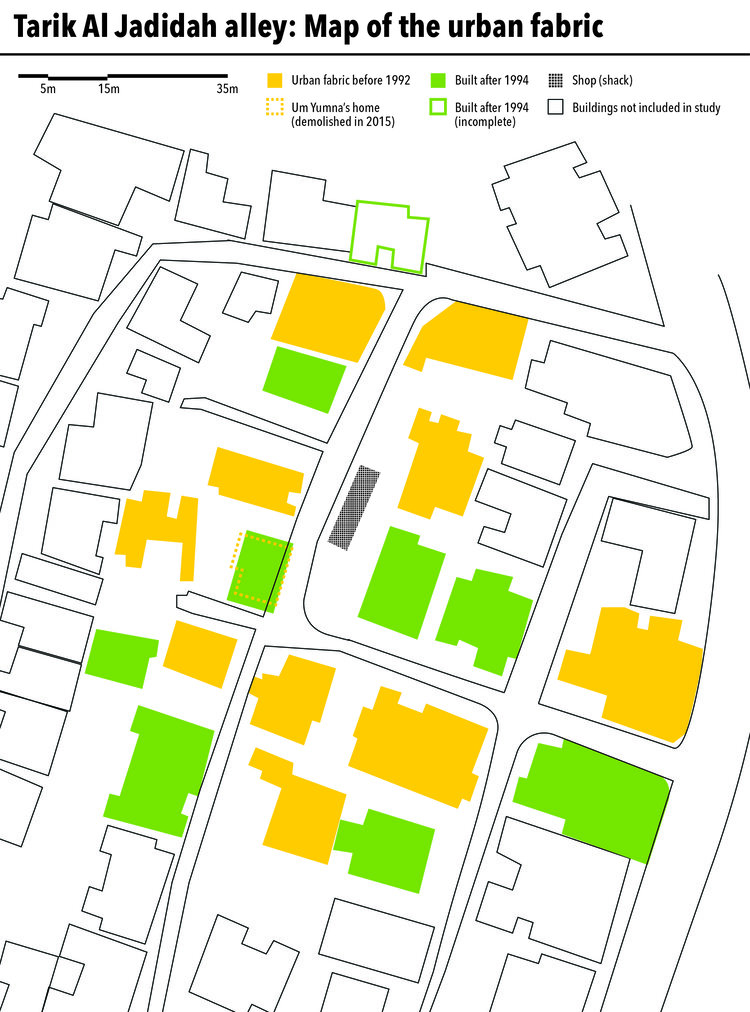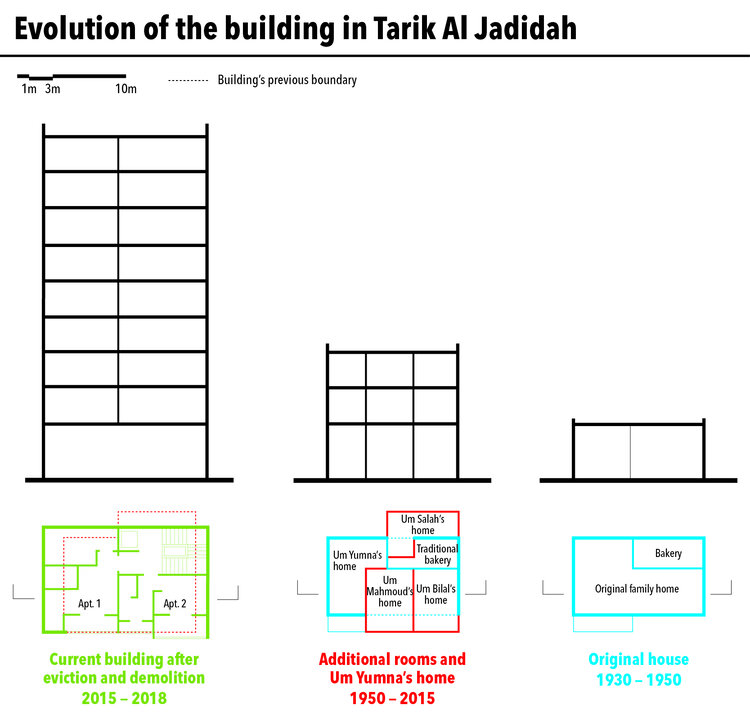“It is a building unlike any typical building”
Autobiography and the meaning of home
Yumna, the only daughter of Um Yumna, tells today the story of her and her family’s eviction from that house. She recounts how circumstances led her parents to leave their first home and rent an apartment in Tarik Al Jadidah, in a building belonging to one of the first Lebanese families to settle and build in the neighborhood in the 1930s. That building no longer exists today. In 2015, in partnership with engineer Hammoud who has several projects in the area the plot’s heirs demolished the building and replaced it with a modern residential building of 11 floors with a locked metal gate. Today, it belongs to the heirs and the heirs’ heirs, and some of them live in the building’s apartments.
The home that Um Yumna and her family lived in was on the ground floor, and the building was no more than three floors high. Initially, the building was nothing more than a simple family home. The owners would add rooms around the main building whenever one of the children married. Before long, the family built upper floors and began to rent out the rooms on the ground floor, and later the upper floors, as Tarik Al Jadidah grew and with it the demand for housing in the 1940s and 1950s [2].
Twelve families rented in that building. “One big room, one small room, and amenities. They considered that a home and they would rent it out.” That was home for Um Yumna’s family of eight – six children, the father, and the mother. Everything took place in that one big room with the high ceiling. Next to it was the small room, and next to that was a small kitchen and a small bathroom. Altogether it was no more than 40 square meters.
The house was on a dead-end alley. The cul-de-sac ended at their building and the three properties adjacent to it. In front of the house was a terrace leading to the entrance of the house, which was raised above the alley by three steps. Um Mahmoud was not so lucky. Her home shared a wall with Um Yumna’s and had its entrance on the same cul-de-sac, but it was built at the level of the alley and flooded whenever it rained. In addition to Um Mahmoud’s house, there were the houses of Um Bilal and Um Salah, which had their entrances on the road leading down to the orphanage. Those homes did not get swamped with water. In the middle of the four houses, at the heart of the old part of the building, was the bakery. It was a traditional bakery that had been there since the owners built the house. With time, the heat produced by the bakery’s oven caused the the interior walls to crumble and the foundations around the bakery to decay, so that the steel in the walls showed through in some places. On the outside, only half the building was whitewashed. The other half, on the side of Um Yumna’s house, was still bare concrete blocks, despite the improvements the family made. After Um Yumna’s children grew up and inherited the lease from their deceased father, they made many upgrades to the house, such as installing windows, replacing the water pond with a tank, and other necessary repairs, but the exterior walls were never whitewashed. In the reconstruction period following the Lebanese Civil War, the construction boom enticed the plot heirs who did not have the money for restoration and maintenance. When Um Yumna’s children sensed that their days in the house were numbered, they no longer took on big projects.
[2] Rapid Social Research: Beirut and Its Suburbs, 2005



